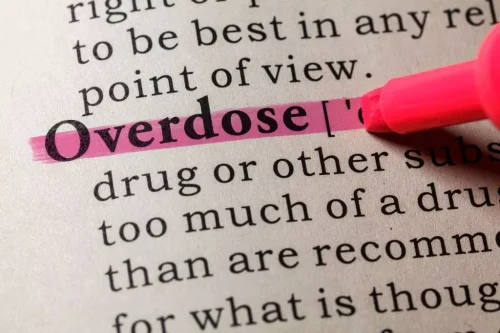
Drinking a lot of alcohol over a long period of time causes nerve damage that can lead to the onset of alcoholic neuropathy. Heavy and chronic drinking is also often tied to nutritional deficiencies. Someone who struggles with alcoholism may replace meals with alcohol, take in a lot of empty calories, and not maintain a healthy and balanced diet. Alcohol can also deplete the body of essential nutrients, and thiamine (vitamin B1) deficiency is common in people who battle alcoholism. Malnutrition due to alcoholism can contribute to nerve damage and alcoholic polyneuropathy as well.
Acetaldehyde
The subgroup without thiamine deficiency consisted of 36 patients, while the subgroup with thiamine deficiency consisted of 28 patients. In addition, 32 patients with nonalcoholic thiamine deficiency neuropathy were also evaluated for comparison. The subgroup without thiamine deficiency, considered to be a pure form of alcoholic neuropathy, uniformly showed slowly progressive, sensory dominant symptoms. Superficial sensation, especially nociception, was predominantly impaired and painful symptoms were the primary complaint in most patients in this group. The histologic features of sural nerve biopsy specimens demonstrated small fibre predominant axonal loss as characteristic of the pure form of alcoholic neuropathy. Alcoholic neuropathy is one of the most common adverse effects of chronic alcohol consumption.
Wrinkles on the brain

Symptoms may include numbness and tingling in the limbs, muscle weakness, and loss of mobility. Severe alcoholic neuropathy may cause motor weakness due to nerve damage. Our muscles need to receive a message from nearby nerves in order to function. When this message is interrupted due to damaged nerves, the muscles cannot function as they normally would. Alcohol neuropathy, a condition characterized by nerve damage due to excessive alcohol consumption, can be mitigated and prevented through a multifaceted approach.
- This article does not contain any studies with human or animal subjects performed by any of the authors.
- The ethanol consumption of these patients was more than 100 g day–1 for more than 10 years.
How do doctors diagnose alcoholic neuropathy?
Researchers have not determined if this is caused by the effects of alcohol on the brain or is the result of thiamine deficiency. Females can be more susceptible than males to many of the negative consequences of alcohol use, such as nerve damage, as they may begin to see effects from a lower amount of alcohol consumption. Regarding the parasympathetic division of ANS, most of the studies are focused on the assessment of nerve conduction mainly in oculomotor and vagus nerves; these include pupil cycle time (PCT) and cardiovascular reflex tests correspondingly [160].

Get Sober With Treatment That’s Made Just For You

It is still unclear what is the major determinant in the pathogenesis of ALN. Primarily, thiamine deficiency is the crucial risk factor of ALN since it induces the progression of Korsakoff’s syndrome and beriberi [144, 145]. Due to similar histologic and electrophysiological symptoms, it was believed that ALN may make up a subtype of beriberi [146]. Further research has confirmed the role https://ecosoberhouse.com/ of thiamine in the pathogenesis of ALN—the well-balanced diet and vitamin B1 supplementation significantly decreased the severity of ALN symptoms [147, 148]. However, the limitations of those studies include the lack of the possibility to measure the amount of vitamin B1 in the serum; further, patients who were involved in the study have received an unrefined form of the supplement.
How we reviewed this article:
In addition, they may order blood tests to check for vitamin and nutrient deficiencies. Another prominent effect of alcoholic neuropathy involves painful and uncomfortable sensations. alcohol neuropathy stages Alcoholic neuropathy can result in hypersensitivity to touch and even resting pain. Light touch can feel exaggerated and painful, particularly in the fingers and toes.
- In an animal study, it has been found that chronic alcohol consumption in rats resulted in a significant depletion in thiamine diphosphate (TDP), the active coenzyme form of thiamine.
- In addition, patients with chronic alcoholism tend to consume smaller amounts of essential nutrients and vitamins and/or exhibit impaired gastrointestinal absorption of these nutrients secondary to the direct effects of alcohol.
- It was observed that abstinence may lead to the regression of several symptoms of AAN [159].
- Benfotiamine (S-benzoylthiamine O-monophoshate) is a synthetic S-acyl derivative of thiamine (vitamin B1).
- Therefore, topical application with capsaicin may provide symptomatic relief from neuropathic pain in patients suffering from alcoholic neuropathy.
Neurologic disorders can include fetal alcohol syndrome, dementia, and alcoholic neuropathy. Alcohol abuse causes a wide range of disorders that affect the nervous system. These include confusion, cerebellar ataxia, peripheral neuropathy, and cognitive impairment. Chronic and excessive alcohol consumption is the primary cause of peripheral neuropathy. It is worth noting that peripheral neuropathy has no reliable treatment due to the poor understanding of its pathology. Electrical nerve stimulation sends a small electrical current through the skin and nerves that can help with sensitivities and pain, making it an option for treatment.

